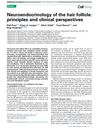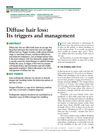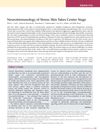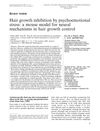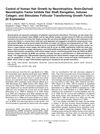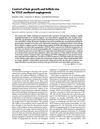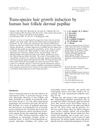The Local Hypothalamic–Pituitary–Adrenal Axis in Cultured Human Dermal Papilla Cells
June 2020
in “
BMC Molecular and Cell Biology
”
corticotropin-releasing factor CRF human dermal papilla cells DPCs outer root sheath cells ORSCs hair shaft elongation catagen phase cell cycle arrest G2/M phase reactive oxygen species ROS anagen-related cytokines hair growth hypothalamic-pituitary-adrenal axis HPA axis proopiomelanocortin POMC adrenocorticotropic hormone ACTH cortisol CRF receptor antagonists stress hormone hair growth cycle stress-related hormones
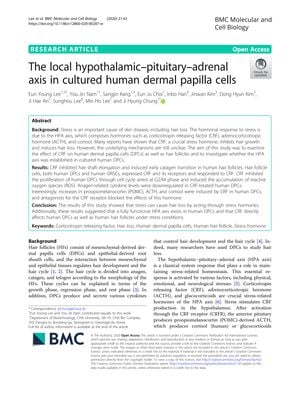
TLDR Stress hormone CRF can cause hair loss by affecting hair growth cells and hormones.
The study by Lee et al. explored the impact of the stress hormone corticotropin-releasing factor (CRF) on hair growth, particularly focusing on its effects on human dermal papilla cells (DPCs) and outer root sheath cells (ORSCs). The research demonstrated that CRF can inhibit hair shaft elongation and trigger an early transition to the catagen phase, which is a regression phase in the hair growth cycle. CRF was found to cause cell cycle arrest at the G2/M phase in DPCs, induce the accumulation of reactive oxygen species (ROS), and downregulate anagen-related cytokines, which are associated with hair growth. The study also revealed that human DPCs express CRF and its receptors and that a local hypothalamic-pituitary-adrenal (HPA) axis exists within these cells. This axis responds to CRF by increasing levels of proopiomelanocortin (POMC), adrenocorticotropic hormone (ACTH), and cortisol, which are stress-related hormones. These effects could be blocked by CRF receptor antagonists, suggesting a direct link between stress and hair loss. The study used cells derived from three individual patients and included a variety of assays to support its findings.


